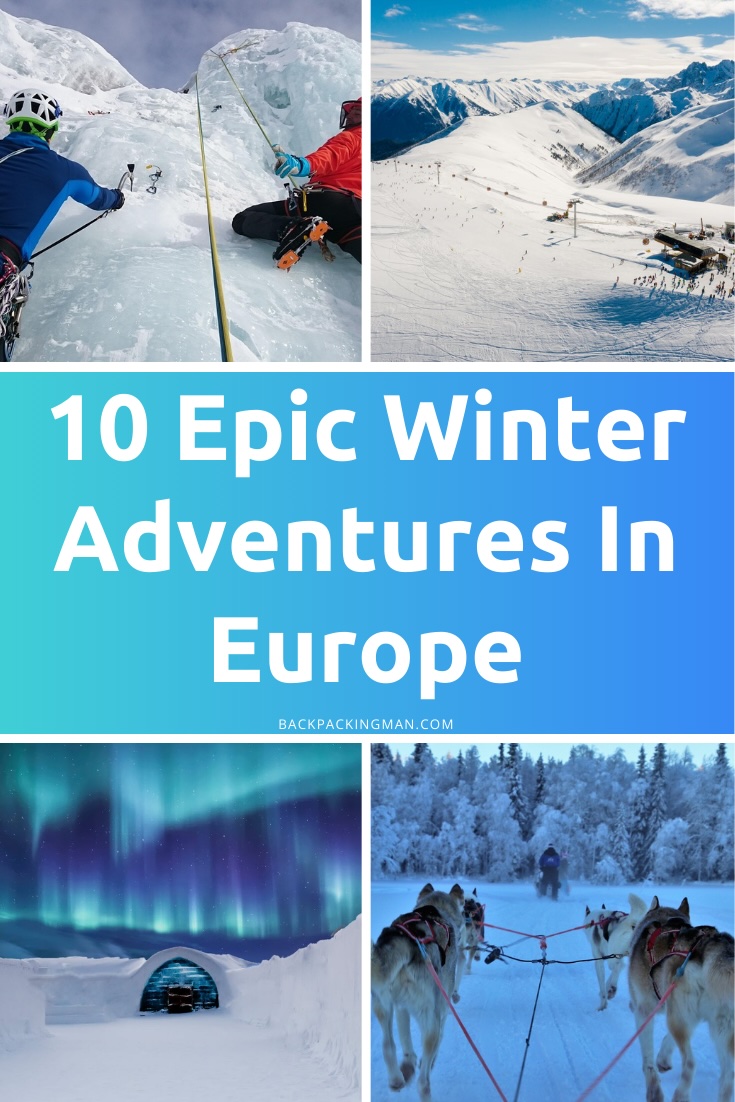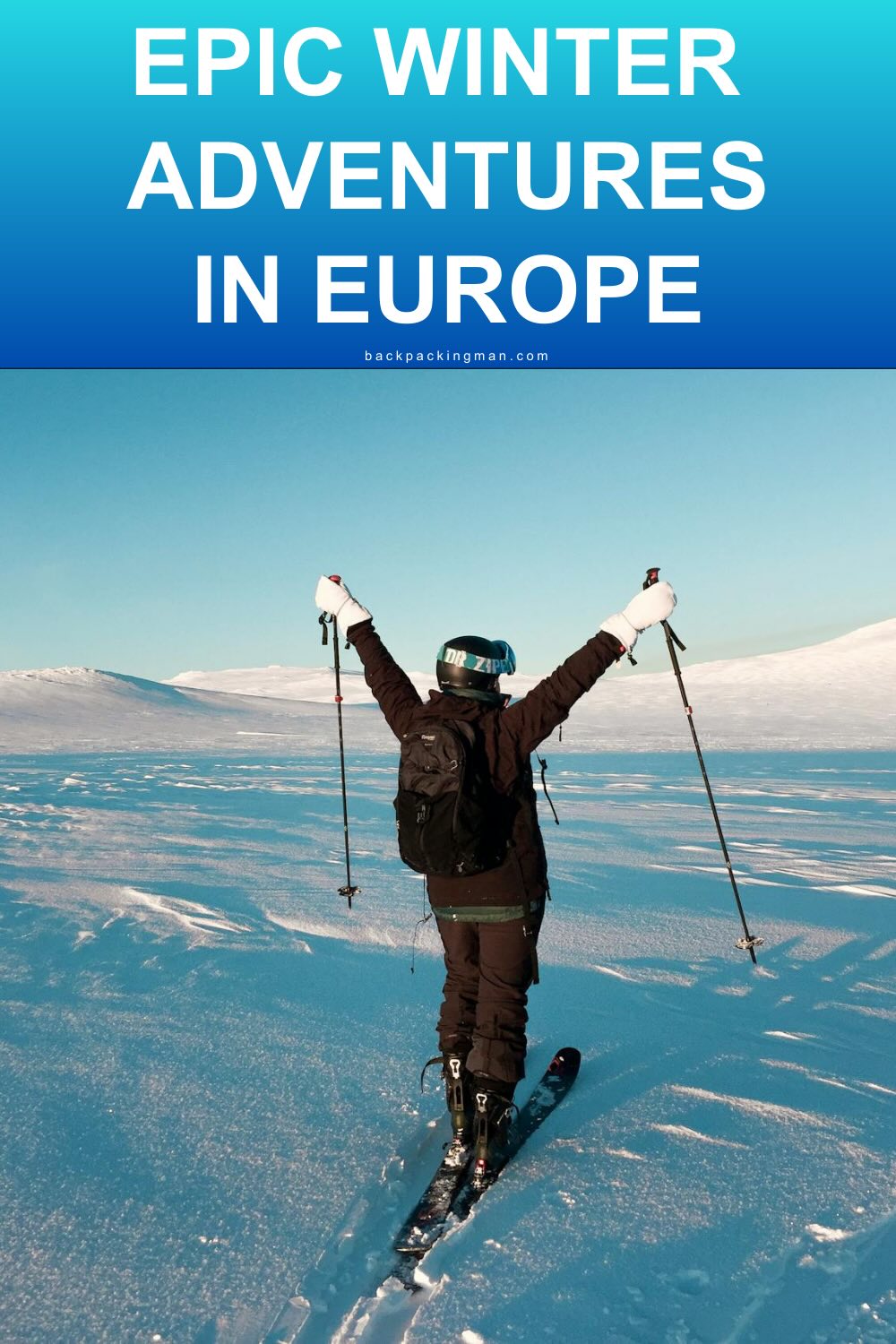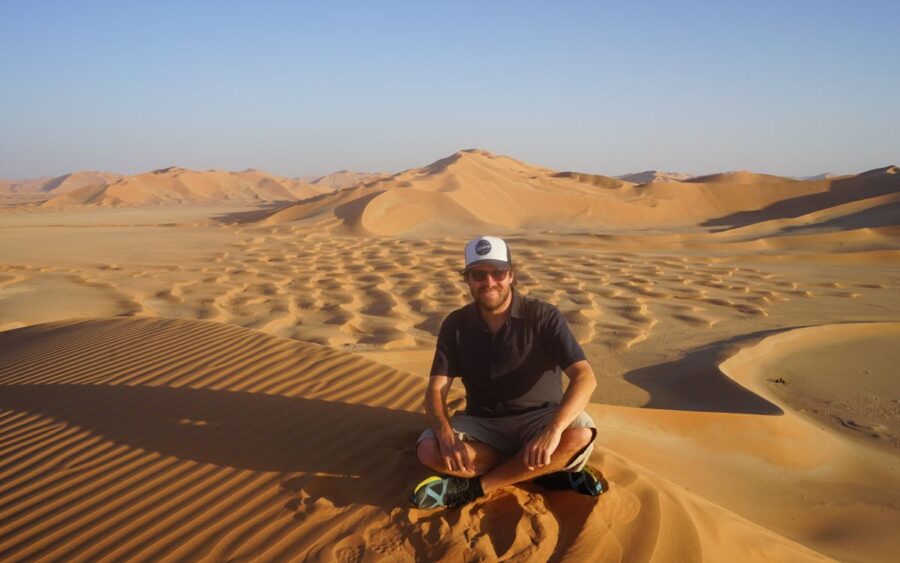These are some of the best outdoor winter adventures in Europe, from the far northern reaches of Scandinavia to the tucked-away mountain villages of the Alps.
Whether you’re a seasoned skier, an aspiring ice climber, or someone who dreams of sleeping beneath the Northern Lights, Europe’s winter landscapes offer adventures for every kind of explorer.
Naturally, there are a lot more adventurous activities in winter in Europe that you could do, but these are some of the best.
Personally, I have done all of these activities myself, except for the ice climbing, but I have a friend who loves ice climbing who said that it must be on this list! Also, I have not been to every destination for each activity, but I did a lot of research on some of the best places to go for particular ones.
Also note that I love Svalbard, which is way up in the Arctic, and under Norwegian protection, where you can do some epic winter adventures as well, but as it’s not part of Europe, I left it off this list. I added a link at the end of the article for you to take a look at Svalbard as a possible option as well for a destination to go to, as it’s actually quite easy to reach via a flight from Oslo, Norway.
Skiing and Snowboarding: Europe’s Classic Winter Adventure
No conversation about winter sports in Europe is complete without mentioning skiing and snowboarding. The continent boasts some of the most renowned mountain ranges in the world, with a network of ski resorts that cater to everyone from first-timers to Olympic-level athletes.
The Alps: A Winter Playground
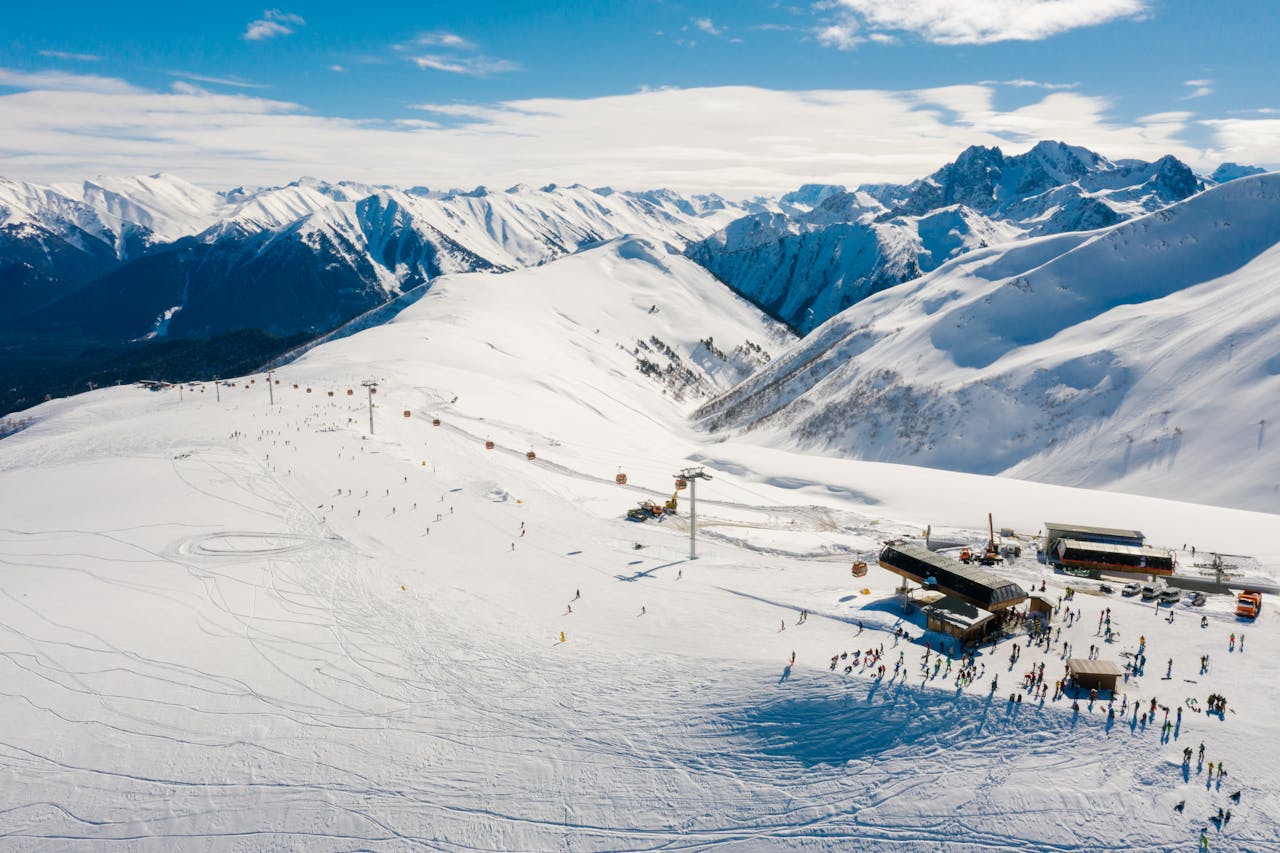
Stretching across France, Switzerland, Austria, and Italy, the Alps are the epicenter of European skiing. Resorts like Chamonix (France), St. Anton (Austria), Zermatt (Switzerland), and Cortina d’Ampezzo (Italy) are legendary for their slopes and après-ski culture. The Alps offer vast ski areas with hundreds of kilometers of pistes, powder-filled backcountry runs, and world-class facilities.
What makes the Alps special is not just the scale but the variety:
- Wide, groomed runs for beginners and intermediates.
- Steep descents and challenging off-piste terrain for advanced skiers.
- Family-friendly villages with ski schools and cozy chalets.
Après-ski is a culture of its own, with lively mountain bars, hot fondue dinners, and the hum of live music filling alpine valleys at dusk.
The Pyrenees and Beyond
For travelers seeking something less crowded, the Pyrenees (straddling France and Spain) offer excellent skiing with a more relaxed vibe. Resorts like Baqueira-Beret in Spain are favorites among locals, while Andorra has become a hidden gem for budget-conscious adventurers.
Farther north, Norway and Sweden provide ski areas with a very different feel—think fewer people, longer daylight hours (in March and April), and the chance to combine skiing with Northern Lights watching. Try Hemsedal in Norway or Åre in Sweden for a Scandinavian ski adventure.
Snowshoeing and Winter Hiking: Slower, Deeper Exploration
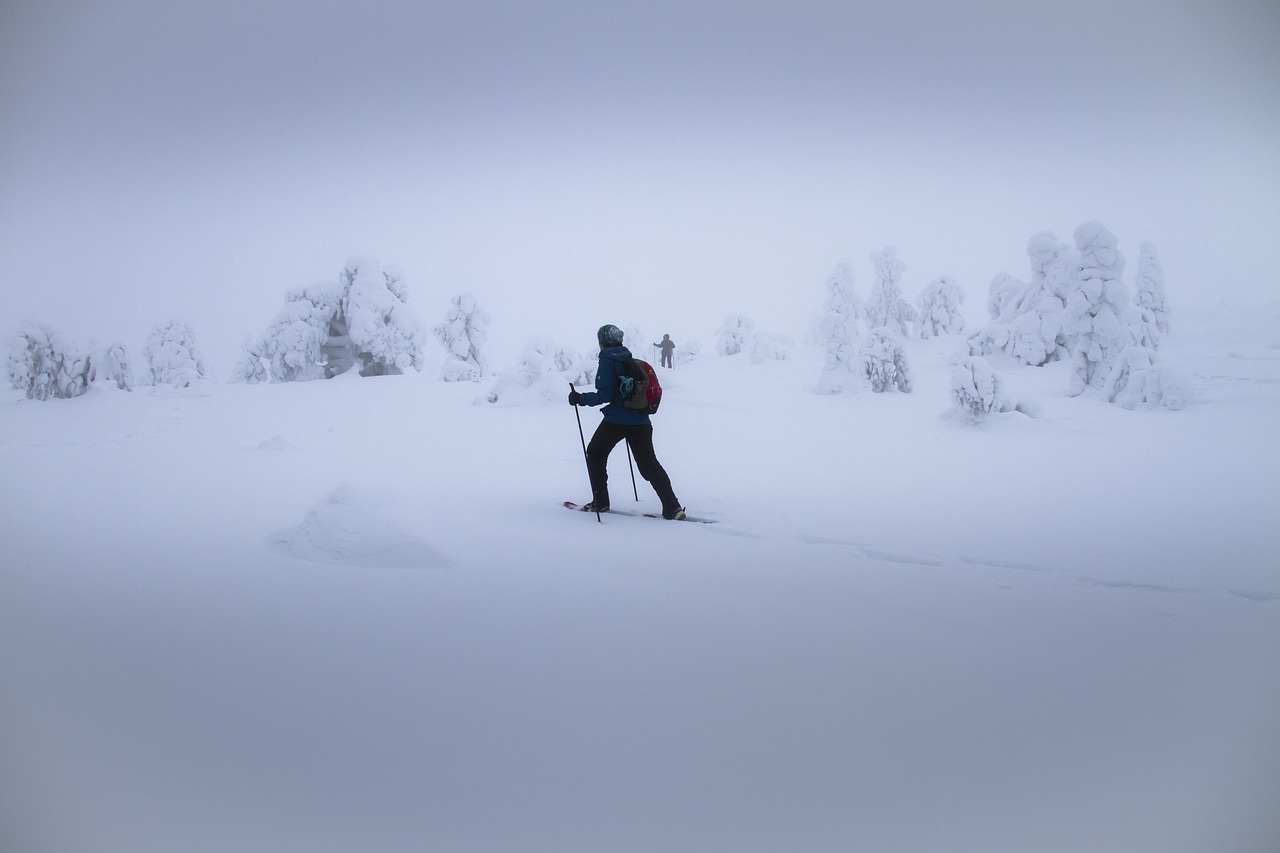
While skiing grabs headlines, snowshoeing and winter hiking are perfect for those who want to connect more quietly with nature. Walking through silent forests or across frozen lakes gives a sense of solitude rarely found in summer.
The Dolomites in northern Italy are particularly enchanting in winter. Snowshoe trails lead past jagged limestone peaks, silent alpine meadows, and refugios serving steaming plates of pasta. Snowshoeing here is less about adrenaline and more about immersion in dramatic scenery.
In Scandinavia, snowshoeing allows travelers to venture deep into the wilderness where moose and reindeer roam. Lapland’s trails near Levi or Rovaniemi are especially rewarding, offering a mix of boreal forest and open tundra.
Cross-Country Skiing: Endurance Meets Scenery
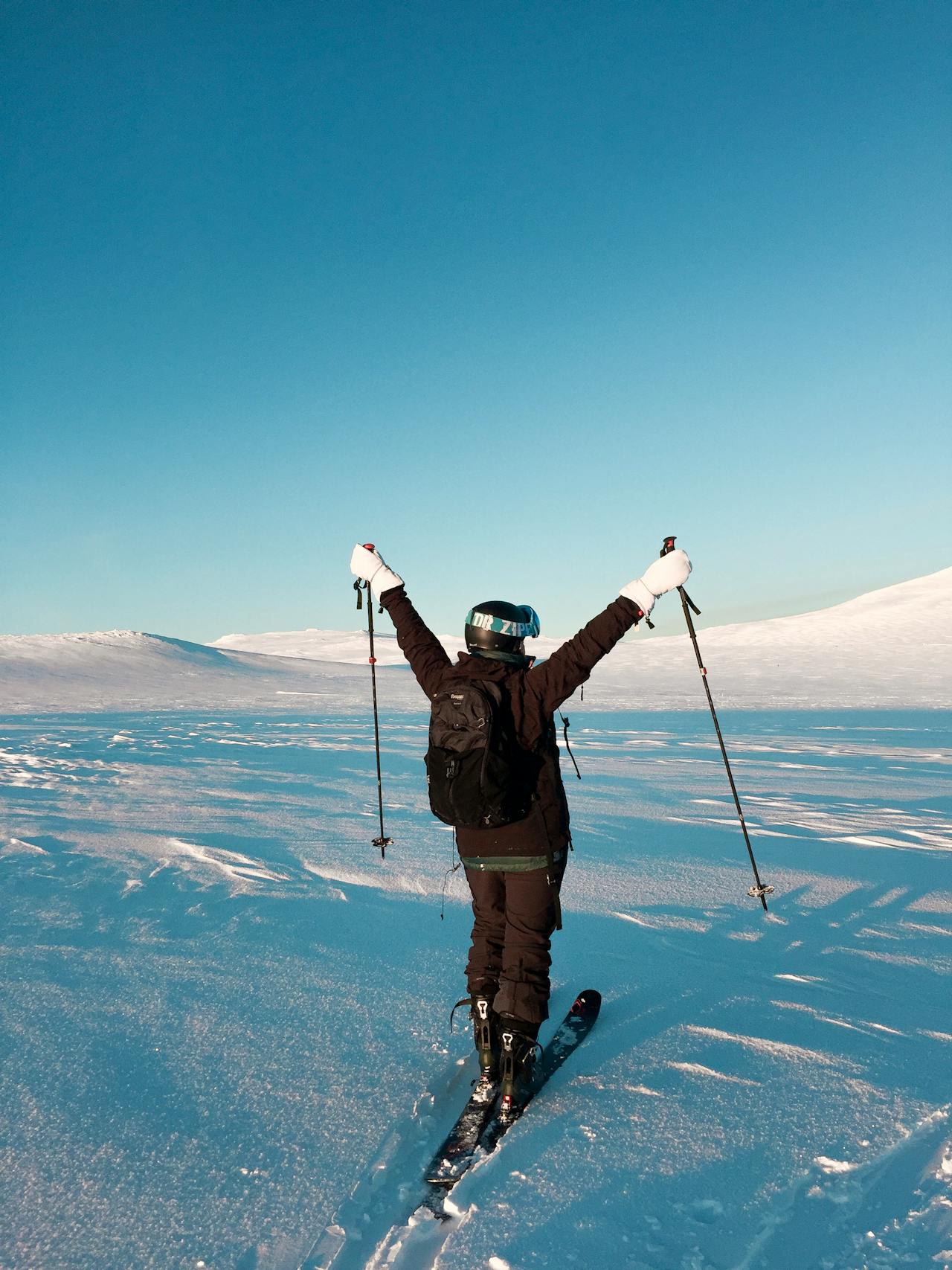
For those who prefer endurance over steep descents, cross-country skiing (or Nordic skiing) is a classic European pastime. Unlike downhill skiing, it emphasizes stamina and grace as you glide across rolling landscapes.
Norway is the birthplace of cross-country skiing, and the tradition runs deep. Locals treat it as both recreation and national identity. Lillehammer, site of the 1994 Winter Olympics, has extensive networks of trails for all skill levels. In Finland, trails weave between frozen lakes and small villages, with cozy cabins serving hot berry juice and pastries along the way.
Even Central Europe has its share of cross-country gems. The Bavarian Forest in Germany and the Czech Republic’s Jizera Mountains are ideal for those who want to combine sport with cultural exploration.
Ice Climbing: Vertical Adventures on Frozen Falls
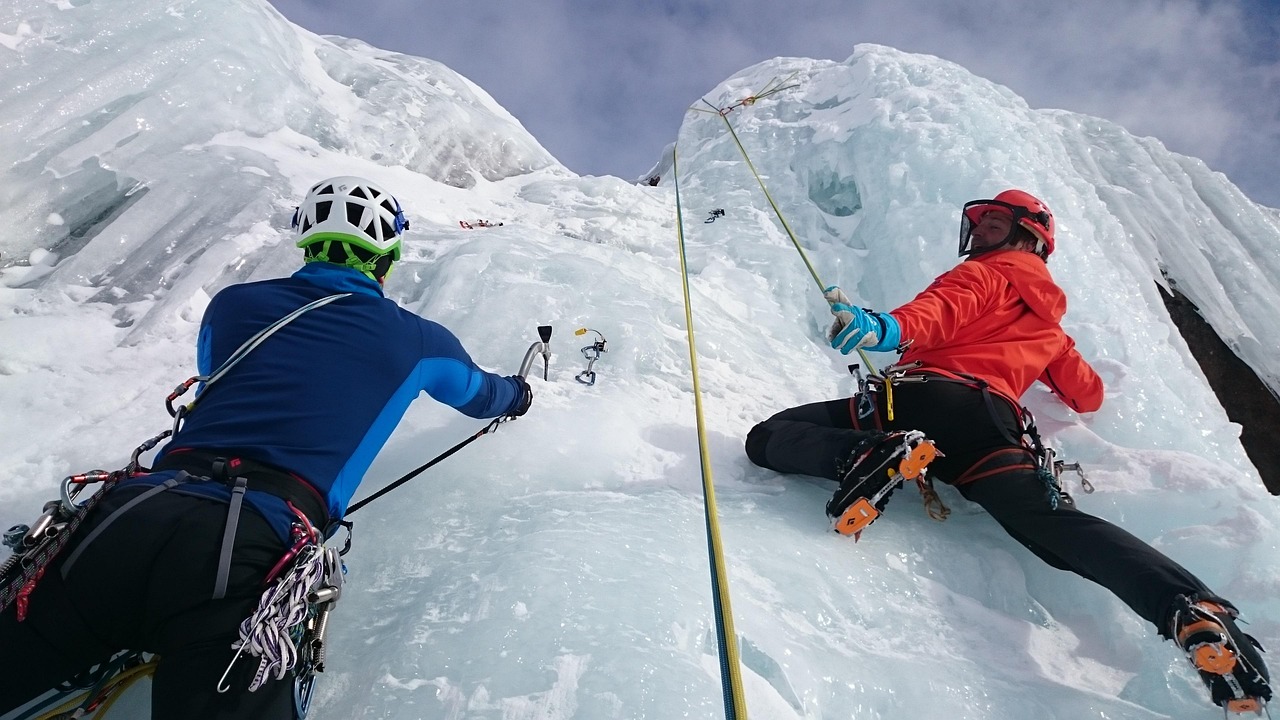
For true adrenaline seekers, ice climbing offers one of winter’s most thrilling challenges. Europe’s mountains are filled with frozen waterfalls and icy cliffs that become playgrounds for climbers in winter.
Chamonix in the French Alps is considered a mecca for ice climbing, with routes suitable for beginners and experts alike. Guides in the region offer introductory courses, making it accessible even if you’ve never strapped crampons onto your boots before.
In Scotland, the Cairngorms National Park is another hotspot. Harsh winter conditions create excellent ice and mixed climbing routes, and tackling them is as much about mental toughness as physical skill.
Dog Sledding and Reindeer Safaris: A Taste of the Arctic
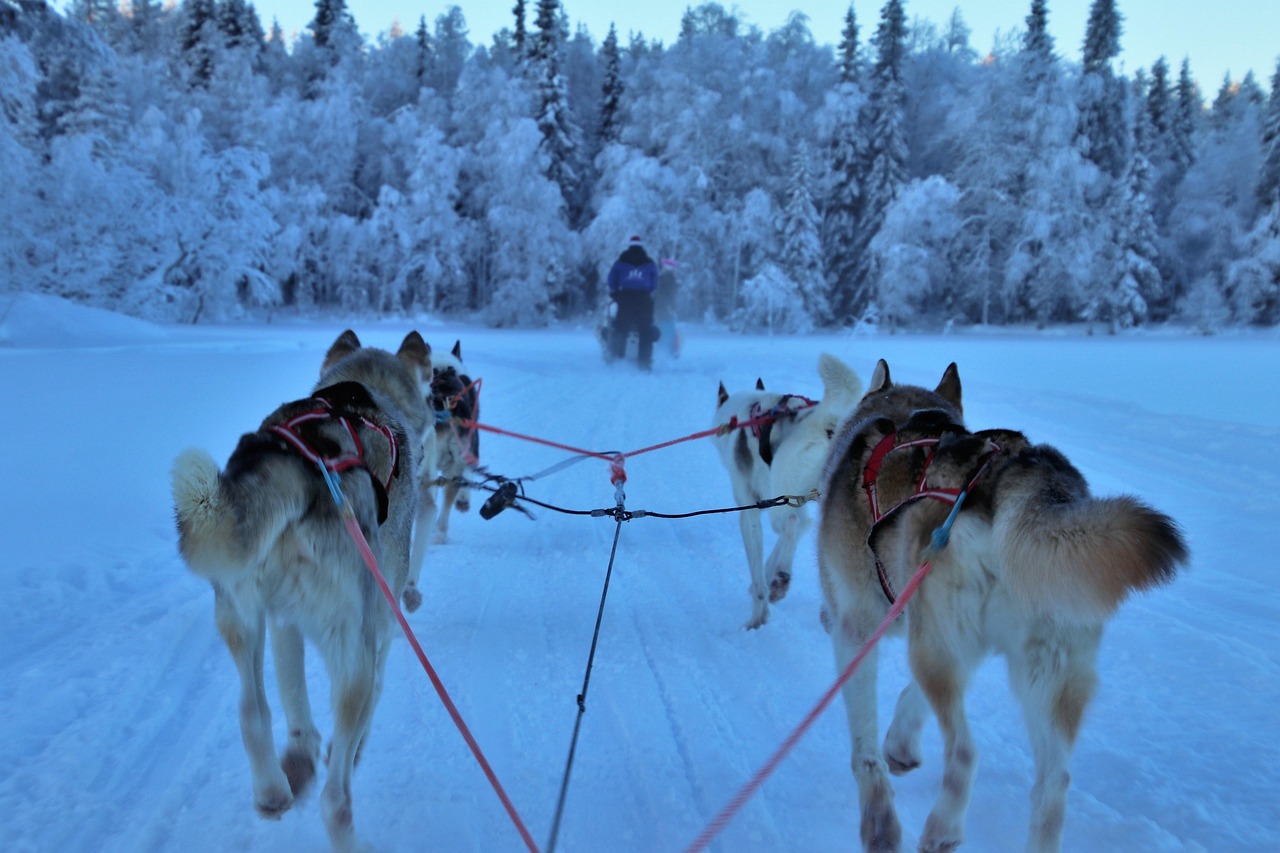
Not all winter adventures involve skis or ice axes. In Northern Europe, particularly Lapland (spanning Norway, Sweden, and Finland), husky sledding is a magical way to experience snow-covered landscapes.
Driving a husky team across frozen lakes and silent forests is exhilarating. The dogs, bred for stamina and speed, seem to thrive in the cold, and learning to control a sled is both challenging and deeply rewarding.
Reindeer safaris offer a more traditional, slower-paced alternative. These experiences connect travelers to Sámi culture, the Indigenous people of Lapland, who have relied on reindeer for centuries. Sitting beneath blankets in a reindeer sleigh, gliding through snowy wilderness, feels like stepping into a winter fairy tale.
Ice Skating on Natural Rinks
Few things capture the magic of winter like skating on a frozen lake surrounded by snow-covered trees. While indoor rinks exist across Europe, natural ice skating is something altogether different.
In the Netherlands, if you’re lucky, sometimes in winter the canals freeze over and transform towns into vast skating networks when the winter is cold enough. The “Elfstedentocht,” an almost mythical long-distance skating tour across 11 towns in Friesland, takes place only during particularly cold winters.
Austria and Switzerland also boast stunning natural ice rinks. Lake Weissensee in Austria becomes Europe’s largest natural ice surface each winter, drawing skaters from across the continent. The scenery alone—mountains reflecting off frozen water—makes it unforgettable.
Sleeping in the Snow: Igloo Hotels and Arctic Camps
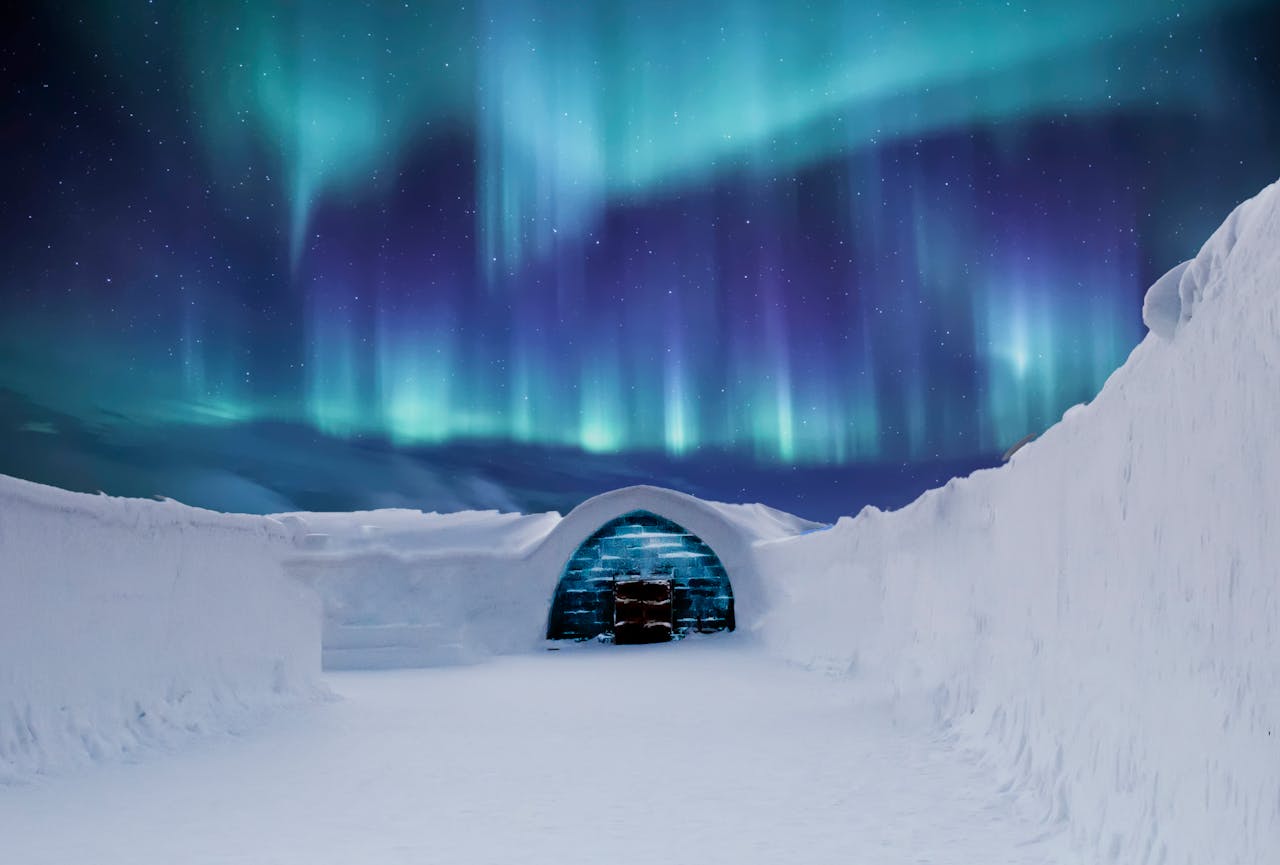
For those who want their adventure to continue after the day’s activities, winter offers some of the most unique accommodations imaginable.
In Finland and Sweden, travelers can spend a night in ice hotels carved entirely from snow and ice. Rooms feature sculpted walls, ice beds covered in reindeer hides, and glowing ice art. The Icehotel in Jukkasjärvi, Sweden, is the most famous, rebuilt each year with new designs.
Igloo villages across the Alps also give guests the chance to sleep under snow domes, with starry skies visible through clear igloo roofs. Imagine watching the Northern Lights from the warmth of your sleeping bag, deep in the Arctic Circle—it’s an adventure in itself.
Winter Mountaineering: For the Brave and Experienced
Climbing mountains in winter is a pursuit reserved for experienced adventurers, but Europe offers some of the most spectacular opportunities for those willing to take on the challenge.
The Mont Blanc Massif, Europe’s highest range, attracts mountaineers year-round. Winter ascents are not for the faint of heart, demanding technical skills, resilience, and expert guidance.
Scotland’s Ben Nevis also transforms into a formidable climb in winter. Snow, ice, and unpredictable weather make it a true test of endurance, but the sense of achievement upon summiting Britain’s highest peak in winter conditions is unparalleled.
Hot Springs in the Snow: Recovery and Relaxation
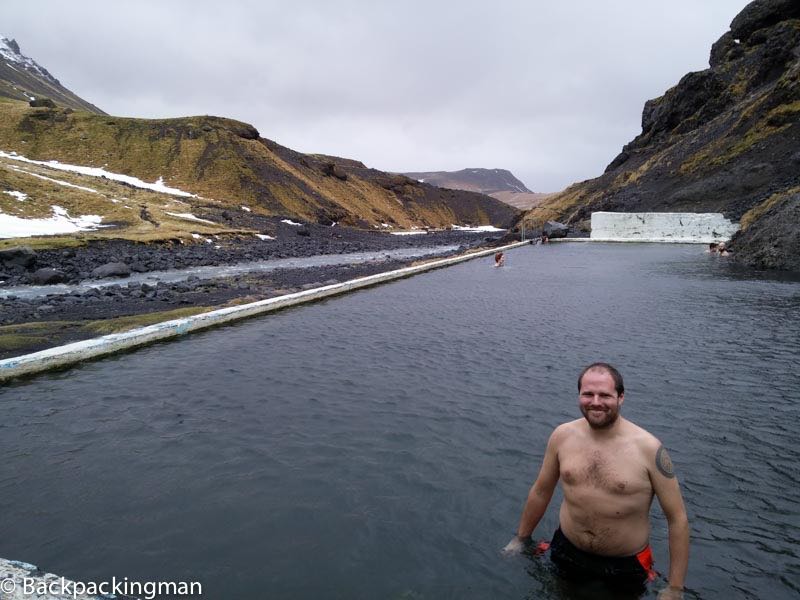
Adventure is not just about exertion—it’s also about recovery. Across Europe, natural hot springs and thermal spas offer the perfect antidote to a day in the cold.
Iceland is famous for its geothermal pools, and nothing beats soaking in steaming waters while snow falls around you. The Blue Lagoon near Reykjavík is iconic, but smaller, less-touristy pools across the island offer quieter experiences.
In the Alps, Austria’s Tirol region and Switzerland’s Valais are dotted with spa towns where outdoor pools are heated even in the depths of winter. Imagine floating in warm water with snowy peaks rising around you—a winter adventure of relaxation.
Cultural Adventures in Winter
Outdoor winter travel in Europe is not just about physical activity. It also intersects with cultural traditions that make the season special.
- Christmas markets across Germany, Austria, and Eastern Europe bring snowy cities to life with lights, music, and mulled wine.
- Epiphany swims, where locals plunge into icy rivers or lakes, can be observed—or even joined—in places like Prague or Sofia.
- Traditional winter festivals in alpine villages blend skiing competitions with parades, costumes, and age-old rituals celebrating the season.
These cultural dimensions add richness to any winter adventure, reminding travelers that winter here is as much about community as it is about sport.
Tips for Planning Outdoor Winter Adventures in Europe
Before setting out on a winter adventure, a few practical considerations can make all the difference:
- Gear matters: Invest in proper clothing and equipment. Layering is key, and waterproof outer shells are essential.
- Guides are invaluable: For activities like ice climbing or backcountry skiing, hiring local guides ensures both safety and a deeper experience.
- Timing counts: December brings Christmas magic, while January and February are peak ski months. March often combines good snow with longer daylight hours.
- Respect nature: Avalanches, thin ice, and extreme cold are real dangers. Always check local conditions and heed warnings.
Why Winter in Europe Is Worth the Cold
Winter travel in Europe is not about escaping the cold but embracing it. It’s about testing yourself on steep slopes, finding peace in snowy forests, and discovering traditions that bring warmth to the darkest months. Unlike summer, when destinations can feel crowded and overrun, winter opens up vast spaces of silence and solitude.
From the adrenaline rush of skiing off-piste in the Alps to the quiet awe of gliding behind a team of huskies in Lapland, outdoor winter adventures in Europe offer something profoundly human: connection with nature at its most raw and beautiful.
Have a read of my article about Things to do in Svalbard in Winter.
I recommend using SafetyWing Travel Insurance for your adventure trip. It’s best to be prepared when out doing adventurous activities, in case anything goes wrong.
If you like this article about winter adventures in Europe, a share would be cool (pun intended).
